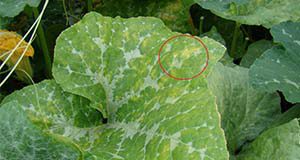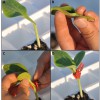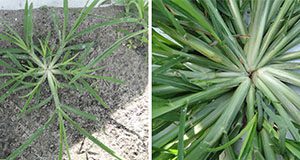This three-page fact sheet describes the biology and management of American black nightshade, explaining how to control for it in tomato and pepper, cucurbits, and strawberry. Written by Nathan S. Boyd, Shawn Steed, Chris Marble, and Andrew MacRae and published by the Horticultural Sciences Department.
http://edis.ifas.ufl.edu/hs1176
Tag: Cucurbits
Biology and Management of Goosegrass (Eleusine indica (L.) Gaertn.) in Tomatoes, Peppers, Cucurbits, and Strawberries
This four-page fact sheet gives a brief description of the biology and management of goosegrass, a common annual turf and horticultural weed found throughout Florida that grows well in compact, wet soils and superficially resembles crabgrasses. Written by Nathan S. Boyd, Kiran Fnu, Chris Marble, Shawn Steed, and Andrew W. MacRae and published by the Horticultural Sciences Department.
http://edis.ifas.ufl.edu/hs1178
Management of Cucurbit Downy Mildew in Florida

Cucurbit downy mildew is a major disase that affects over 40 species of cucurbits, like watermelon, muskmelon, cucumber, squash, and pumpkin. The classic sign of the disease is the presence of dark sporangia, a structure that holds developing spores, on the underside of infected leaves. As the disease progresses, it may lead to large necrotic areas that cause defoliation and a reduction of yield and marketable fruit. This nine-page fact sheet describes the symptoms and signs, epidemiology and disease cycle, host range and pathotypes, and the ways to manage cucurbit downy mildew. Written by Mason J. Newark, Mathews L. Paret, Nicholas S. Dufault, Pamela D. Roberts, Shouan Zhang, Gary E. Vallad, Josh Freeman, and Gene McAvoy, and published by the Plant Pathology Department.
http://edis.ifas.ufl.edu/pp325
Techniques for Melon Grafting
Grafting as a cultural practice for controlling soilborne diseases and improving abiotic stress tolerance has been widely used in vegetable production in many areas of Asia and Europe. Interest in vegetable grafting has been growing in the United States in recent years, as well. Cost, along with the desire to customize scion cultivars and the need to produce organic transplants, has led many small and organic growers to choose to graft plants by themselves. To help growers who are interested in grafting melon plants achieve a high graft survival rate, this 5-page fact sheet introduces commonly used grafting techniques and their application in specific circumstances. Written by Wenjing Guan and Xin Zhao, and published by the UF Department of Horticultural Sciences, December 2014.
 fl.edu/hs1257>http://edis.ifas.ufl.edu/hs1257
fl.edu/hs1257>http://edis.ifas.ufl.edu/hs1257

